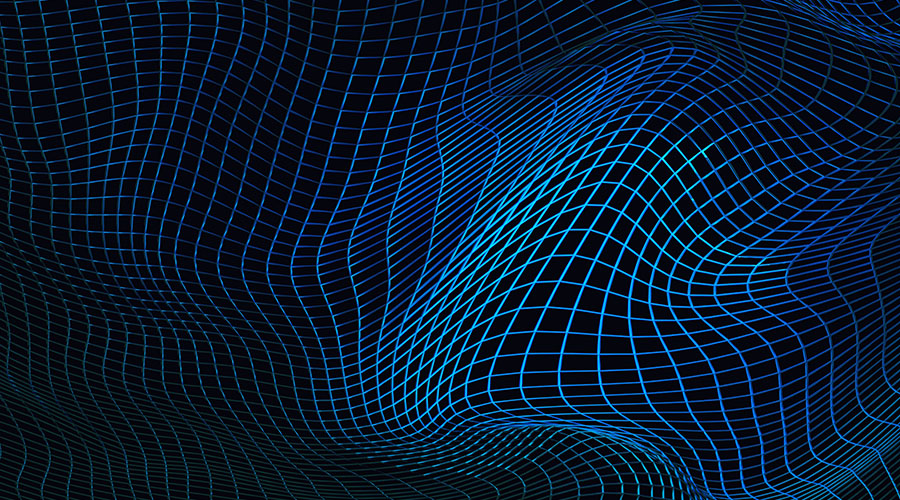At the annual APS Division of Atomic, Molecular and Optical Physics meeting, physicists made the case for a new way of modeling a universe.
By Sophia Chen | July 13, 2023

Humans have long built models of the vast, mysterious universe. From celestial spheres that map the constellations to computer-based simulations of dark matter, these approximations give their users more tangible objects to study.
Now, physicists are exploring a new paradigm by building models out of quantum mechanical materials, such as Bose-Einstein condensates and devices that transmit single photons. These models are a new type of simulation, potentially able to probe questions beyond the reach of conventional computing — like how to reconcile the predictions of general relativity and quantum mechanics, theories that physicists have struggled to unite.
This June, physicists gathered at the Division of Atomic, Molecular and Optical Physics (DAMOP) meeting in Spokane, Washington, to present research in this field in a session called “Quantum Matter in Synthetic Curved Spacetimes.”
“Quantum matter” refers to “many interacting particles . . . that obey quantum mechanics,” says Joseph Maciejko of the University of Alberta in Canada. In simulations, researchers can manipulate these particles’ interactions to mimic the effects of gravity in different universes, including flat, spherical, or hyperbolic ones.
The physicists use the word “synthetic” to convey that current simulations are more loosely inspired by nature than reflective of it. “We don't simulate the universe — we try to implement a simple theoretical model,” says Markus Oberthaler of the University of Heidelberg in Germany. For example, his team used a Bose-Einstein condensate to simulate quantum fields in a curved universe with just two spatial dimensions. (Our universe has three.)
Maciejko, meanwhile, presented theoretical work motivated by an experiment from Princeton collaborators that used devices called waveguide resonators, small cavities that selectively trap and transmit individual photons. Arranged in a grid of heptagons and triangles, the devices enabled photons to move around as though in a two-dimensional hyperbolic space —a sort of Pringles-chip-shaped universe, says Maciejko.
Studying quantum phenomena in a hyperbolic space could be useful for string theory, which aims to unite quantum mechanics and general relativity. However, Maciejko is studying this simulation as an interesting object in its own right, separate from cosmology. In essence, Maciejko’s Princeton collaborators have created a new type of crystal geometry, with particles arranged on a curved, hyperbolic lattice — in contrast to the lattices of natural crystals, such as ice or silicon, which are composed of straight lines in Euclidean space.
Maciejko presented research in which his team adapted electronic band theory to this type of crystal. Normally, band theory describes the allowed energies of a material’s electrons, which then determines the material’s bulk properties, such as whether it can conduct electricity. But in the hyperbolic crystal that Maciejko studied, band theory predicted the frequencies of photons that would transmit through the device.
This research brings together subfields of physics conventionally siloed from one another. Condensed matter physicists can offer understanding of the properties of quantum matter, while atomic, molecular, and optical physicists have techniques to control and manipulate quantum matter. Oberthaler is working to bring in more cosmologists and astrophysicists, who can help identify the simulations that are most relevant to studying the universe.
These simulations also expand theorists’ horizons. “It requires us to import mathematics that's been never really been used before in physics,” says Maciejko. “Usually, when we run out of mathematical language to describe the physics, that means we've touched upon something fundamentally new that causes us to broaden our language.” For his work, that math is algebraic geometry.
These are simplified models that may or may not reflect our actual universe. But Maciejko thinks understanding them could spark a deeper intuition about some of physics’ most arcane questions. “Einstein discovered relativity by thinking about clocks on trains, which are not things we're actually really interested in,” he says. He hopes that these quantum simulations might inspire fundamental breakthroughs in a similar way.
Sophia Chen is a writer based in Columbus, Ohio.
Interested in presenting your own research? Submit your scientific abstract for an upcoming meeting.
Read more:
How Do You Study Quantum Materials That Don’t Yet Exist? Ask AI. (APS News, March 2023)
The 2022 Physics Laureates Share Their Stories in Stockholm (APS News, February 2023)
New Experiment Suggests Imaginary Numbers Must Be Part of Real Quantum Physics (APS News, November 2022)
The Newest Quantum Frontier: Building a Skilled Workforce (APS News, September 2022)
Searching for New Molecules with Quantum Computers (APS News, July/August 2022)
©1995 - 2024, AMERICAN PHYSICAL SOCIETY
APS encourages the redistribution of the materials included in this newspaper provided that attribution to the source is noted and the materials are not truncated or changed.
Editor: Taryn MacKinney
July/August 2023 (Volume 32, Number 7)
Articles in this Issue

